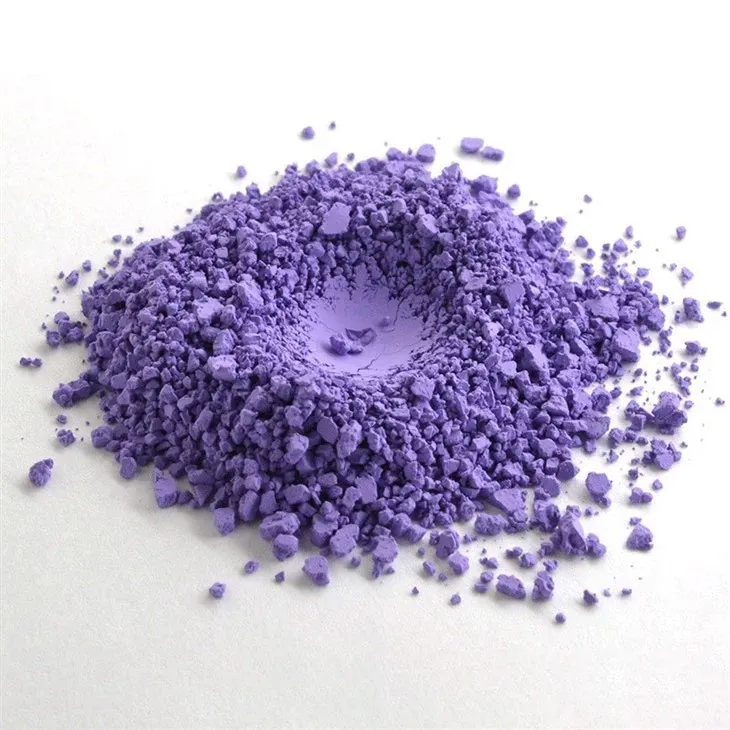Ultramarine Violet color ( 30 g )
Ultramarine Violet is a synthetic inorganic pigment that provides a distinctive, vibrant violet color. It is one of the most stable, lightfast pigments available and is known for its unique color properties and wide range of uses in various applications. It is chemically similar to ultramarine blue but is synthesized with a different mix of elements to produce its violet hue. Ultramarine violet is part of the larger family of ultramarine pigments, which are derived from natural lapis lazuli or synthetic processes.
Chemical Composition:
- Chemical Formula: Na8[AlSiO4]6[SO4]2 (The compound is based on sodium aluminosilicate with sulfur and is part of the broader family of feldspathoid minerals).
- CAS Number: 12601-18-6 (for the violet variant).
- Other Names: Violet ultramarine, Ultramarine purple.
Physical Properties:
- Color: A strong, vibrant violet with blue undertones.
- Form: Fine powder (similar to other ultramarine pigments, it is available as a dry pigment).
- Density: Approximately 2.7 g/cm³.
- Solubility: Insoluble in water, making it stable and durable in various applications.
- Stability: Highly lightfast and resistant to heat and chemical degradation. It also has excellent resistance to UV degradation.
- Opacity: Semi-transparent to opaque, depending on the particle size and concentration in the final product.
Manufacturing Process:
Ultramarine violet is synthetically produced by heating a mixture of alumina (aluminum oxide), silica (silicon dioxide), sulfur, and sodium carbonate (soda ash). The key to creating the violet version (as opposed to ultramarine blue) is adjusting the ratio of ingredients and the temperature during the synthesis process, which changes the crystal structure of the final product.
The typical synthetic process involves:
- Fusion Process: A blend of raw materials (aluminum, silica, sodium, sulfur) is heated in a furnace to a high temperature, around 800-1000°C.
- Purification: The resulting pigment is then cooled, washed, and purified to remove impurities.
- Color Adjustment: The degree of violet hue is controlled by varying the formulation and synthesis conditions.
Uses and Applications:
Ultramarine violet is used in a variety of industries for its vibrant, unique color and excellent properties.
1. Paints and Coatings:
- Ultramarine violet is commonly used in artists’ paints, especially oil paints, watercolors, and acrylics. It provides a rich, transparent violet hue that blends well with other pigments.
- Usage rate: In paints, usage typically ranges from 5% to 25%, depending on the desired intensity and opacity. This varies based on the formulation and the medium used.
2. Plastics:
- The pigment is used to color plastics and synthetic materials, providing durable and long-lasting violet shades.
- Usage rate: Typically used at 1% to 5% of the total polymer weight, based on the desired shade and strength of the color.
3. Cosmetics:
- Ultramarine violet is used in cosmetics like eyeshadows, blushes, and other makeup products to provide vibrant violet tones.
- Usage rate: In cosmetics, the usage is usually 0.1% to 5%, as it is added in small amounts to achieve the desired color while ensuring safety for skin contact.
- For cold process soap, mix 1 teaspoon with 1 tablespoon of lightweight oil.
4. Ceramics and Glass:
- Ultramarine violet is used in ceramic glazes and glassmaking to achieve rich violet tones.
- Usage rate: For ceramic applications, the pigment is typically used at 1% to 5% for coloring glazes or as part of the ceramic body.
5. Inks:
- It is used in printing inks, particularly for commercial printing, due to its vivid color and high opacity.
- Usage rate: Usage in inks typically ranges from 5% to 15% by weight, depending on the desired intensity.
6. Construction Materials:
- Ultramarine violet is used to color concrete, mortar, and other construction materials.
- Usage rate: In construction applications, it is generally used at 0.5% to 3% by weight of the cement or aggregate.
7. Other Industrial Applications:
- Ultramarine violet is used in the production of toners, specialized pigments, and some other colorants in industrial applications.
- Usage rate: Usage rates for these applications typically range from 3% to 10%, depending on the product formulation.
Key Advantages:
- Lightfastness: Ultramarine violet is highly resistant to fading from exposure to light, making it an ideal choice for outdoor applications, artworks, and items that are exposed to sunlight.
- Chemical Stability: The pigment is stable under a wide range of pH conditions and is resistant to most chemicals, including acids and alkalis.
- Non-Toxicity: It is considered non-toxic and safe for use in a variety of products, including cosmetics and other consumer goods.
- Heat Resistance: Ultramarine violet can withstand high temperatures, making it suitable for use in ceramics, glass, and industrial applications that may involve elevated temperatures.
Percentage and Usage Rate:
The usage rate of ultramarine violet varies depending on the application and the required color intensity:
- Paints and Coatings: 5% to 25%, depending on the formulation and desired color intensity.
- Plastics: 1% to 5%, based on the polymer composition and color strength.
- Cosmetics: 0.1% to 5%, primarily for eyeshadows, blushes, and makeup products.
- Ceramics and Glass: 1% to 5% for glazes and other applications.
- Inks: 5% to 15%, depending on the desired color depth and opacity.
- Construction Materials (Concrete/Mortar): 0.5% to 3% by weight, to achieve the desired violet color.
Environmental and Safety Considerations:
Ultramarine violet is considered environmentally safe and non-toxic. It does not release harmful fumes or chemicals during normal use. The pigment is stable and does not degrade into toxic substances. It is regarded as safe for use in consumer products like cosmetics, paints, and plastics.
Conclusion:
Ultramarine violet is a stable, vibrant, and versatile inorganic pigment with applications ranging from paints and coatings to plastics, cosmetics, and construction materials. It offers excellent lightfastness, heat resistance, and chemical stability, making it a durable and reliable choice across a variety of industries. The typical usage rate varies from 0.1% to 25% depending on the application and the desired color strength

